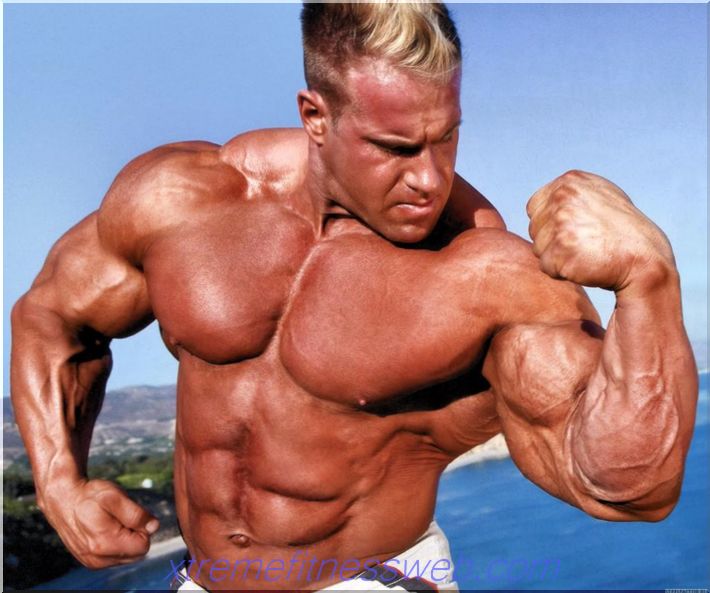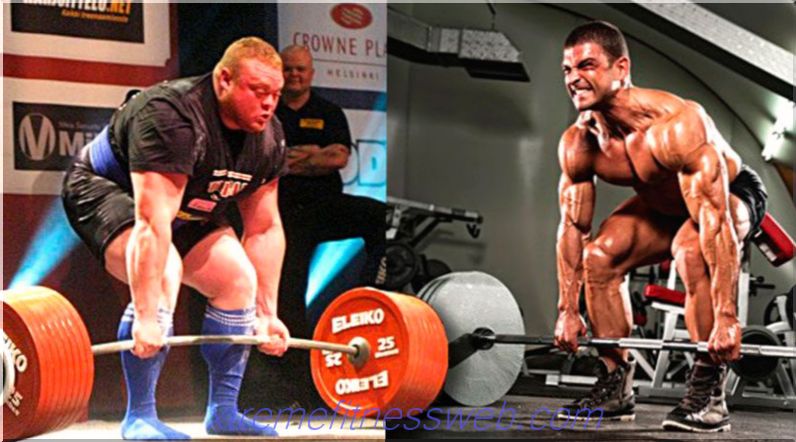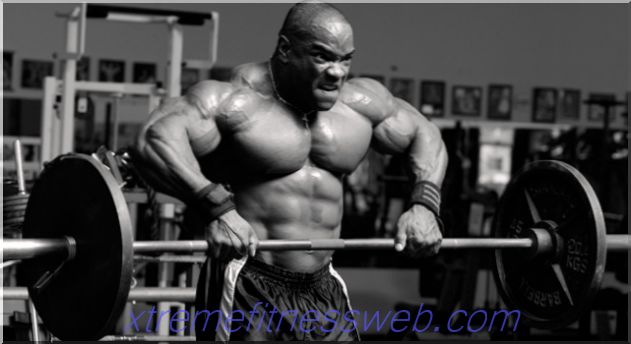- Execution technique
- Execution Options
- Parsing exercise
- Exercise Preparation
- Correct execution
- Mistakes
- Exercise Performance Tips
- Program Inclusion
- Contraindications
- Interesting fact
- How to replace

Raising the legs in focus is an exercise on the abs. It partially engages the front of the thigh. The movement itself came to us from gymnastics. There, this exercise is carried out in full emphasis - hands hold on to the handles, elbows are straightened and inserted, and legs are fully raised with socks above the midline at the waist level. In the fitness version, the movement is performed in the simulator, the athlete is resting on the forearms.
Content
- 1 Technique
- 1.1 Movement
- 1.2 Caution
- 1.3 Important
- 2 Options
- 2.1 Raising the elbows on the elbows
- 2.2 Lateral leg raises in an emphasis
- 2.3 Leg raises based on parallel bars
- 3 Analysis of exercises
- 3.1 Anatomy exercises - which muscles work
- 3.2 Pros
- 3.3 disadvantages of exercise
- 4 Preparation for exercise
- 5 Proper execution
- 6 Mistakes
- 7 Tips for Improving Exercise Performance
- 8 Inclusion in the program
- 9 Contraindications
- 10 interesting fact
- 11 How to replace
Execution technique

- Starting position
- To face the simulator;
- Step onto the leg supports;
- Grasp the handles with your hands;
- Turn your back to the stops;
- Take a standing position on the forearms.
Traffic
- The exercise itself is simple to perform:
- It is necessary to reduce the press and pull the stomach inward;
- Further, straight legs due to the reduction of the press and pulling the pelvic bones to the lower ribs lead up;
- For maximum contraction, the hips must go through the midline of the press;
- After reaching the peak contraction, the legs should be slowly and uncontrollably released.
Attention
- It is necessary to completely remove attempts to cheat with your feet. The technique used in competitive crossfit for the exercise "socks to the crossbar" here is not permissible and acceptable;
- The knees need not be firmly “inserted” so that the legs are straight. With this position of the joint, it will not be possible to achieve a complete reduction in the pressure, and partially the legs will be brought about by quadriceps;
- The voltage in the trapezoid must be removed. The shoulders raised to the ears are a poor helper. They will contribute only to an even greater buildup of the body, and an active violation of technology, in addition, shoulders to ears greatly increase the risk of spasm of the trapezoid and pain sensations after training;
- Dropping your legs down is not recommended. Beginners are often put a bar from the bar on the middle line across the lower latches of the simulator so that they do not lower their legs below this bar and work balanced
Important

- Feet need to be lifted by the press, not by the power of buildup, inertia and quadriceps. To achieve this, it is necessary to imagine how the pelvic bones stretch to the lower ribs, and not how the athlete actively throws up his legs;
- After passing the midline with your hips, you need to bring your legs a little higher, and then do not throw them down, but gently “untwist” the press and go down;
- Socks can not be pulled away like a ballerina, then they will allow you to “insert” your knees to the maximum, and the quadriceps will be included in the work, but you need to work with the press on the contrary;
- This movement will be mastered better if you learn how to do a pelvic lift lying with your legs straight, you are pulled up. You need to understand how the rectus muscle of the abdomen contracts, and not how a person simply swings his legs above the waist.
Execution Options
Raising the knees at elbows

This version of the exercise is suitable for beginners and those who still find it difficult to raise their straight legs up. It is anatomically simpler, as it is easier to understand how to bring the hips to the ribs if the legs are bent. The athlete takes a starting position similar to the previous version, and then gently pulls the pelvic bones to the lower ribs. Lowering is also smooth. With each repetition, it is not necessary to extend the legs at the knees.
Lateral leg raises in an emphasis

This is the same gymnastic exercise that mimics fitness - an option. For fitness purposes, you do not need to learn to throw legs with extended socks up due to inertia and rotation in the shoulder joints. Here it is required to gently pull straightened legs with socks pulled over themselves just above the midline of the body, and just as carefully lower the entire “structure” back.
Raises the legs with support on the bars

This option is intended for those who want to pump oblique muscles. Here it is necessary to pull the knees to the waist, but “along the oblique”, tending the knees to one or the other shoulder.
Parsing exercise
Anatomy exercises - which muscles work

In this exercise, the rectus abdominis works as the main engine. If the athlete bends the legs at the knees, then the hip flexors are also involved, with careless performance, often the load goes into the quadriceps. The back muscles work as stabilizers, and turn on when the athlete brings the shoulder blades and lowers them to the pelvis.
pros
- This movement allows you to build a strong core, especially for those who have problems with pumping the rectus abdominis muscle due to significant lumbar lordosis;
- Exercise uses the press in isolation, but gives a significant load;
- One of the movements that relieve tension from the ileum. Those who like to swing their backs and buttocks with hyperextensions and any kind of slopes with a barbell need to do one of the options for lifting their legs in the hang. This option is suitable even for those who have already decently worked on the grip, and performed a bunch of rods;
- Exercise is well suited for those who have problems with fixing the top of the back, and coverage in the hang. It allows you to remove the compression load from the spine, but does not additionally involve the muscles of the forearm and palm. Thus, the movement allows you to get your share of the load to those who perform many deadlifts;
- Exercise will help relieve tension from the lower back. The athlete must qualitatively press his back to the back of the simulator, and work, curling up.
Disadvantages of exercise
- The movement will be technically difficult for those athletes who have not learned how to work with the press and are trying to throw their legs inertia, or to lift them due to swinging and assistance with the body. Such athletes may not be able to perform the exercise correctly the first time;
- Spasms of the trapezius muscle with weak or, conversely, overloaded trapeziums are a typical minus of this movement.
Exercise Preparation

The training can be considered ordinary and joint warm-up, as well as warm-up of the hip joint. But in ordinary life, this movement is performed as the last exercise of a workout, because the whole workout serves as a kind of warm-up, additional warm-ups are not necessary. Sometimes it is recommended to do one set of lifting the pelvis from the supine position before lifting the legs in the hanging to turn the press on.
Correct execution
- The back should be qualitatively pressed to the back of the simulator and during the exercise, do not tear it off;
- The shoulder blades should be reduced to the spine and lowered to the pelvis, and the press should be tightened, only then it will be possible to pull the lower ribs to the pelvic bones;
- Rocking with legs is not allowed, it is not necessary to start them beyond the line of the back after lowering, and "dump" from top to bottom with sharp movements;
- Exercise is performed according to the general rules of synergy of muscle contraction and breathing, that is, exhalation occurs on effort;
- The movement should not be too active, that is, fast. It is necessary to try to work more smoothly, and to avoid sharp jerking and throwing feet
Mistakes

- You can not sharply swing your legs, change the position of the forearms on the stops and push the socks too quickly to the crossbar;
- It is better to do the exercise synchronously with breathing, and not to change the position of the body anyhow, and hold your breath for effort;
- You should not get your hips behind your back line, so as not to gain excess inertia and to train efficiently.
Exercise Performance Tips
- Experienced athletes can do this weight training. It is convenient to grip the medbol between the legs and raise the legs up. If the ball is not in the hall, you can try to hang loads on your legs, or lift a dumbbell, holding it between your legs. With the slow pace of the exercise, this is more than real;
- The start is always due to the muscles of the legs, but if you bring your hips slightly forward and start with twisting the abdominal muscles, you can make the exercise more effective;
- The slower the pace, the better it will be able to pump up the abdominal muscles;
- If you use the option for pumping oblique, it is important to press the top of the back to the back. The hips must be carefully brought to one and the other shoulder;
- It is more effective to do the exercise with straight legs, but in this case, you need to maintain a small angle in the knee joint, and do not straighten the knees completely;
- Bent legs are suitable for beginners, and those who find it difficult to twist.
Program Inclusion

To include this movement in the training program is at the stage when there is already a physical ability to perform the exercise and there are no problems with mobility in the hip joints. Newbie women often simply cannot stay on their forearms. They fall down due to the fact that a weak back and trapezoid do not allow to stabilize their own weight. Girls must first strengthen their backs with thrusts to the belt, and exercises in the rack (bar), and then already make this movement. You can replace the exercise by lifting the legs in the hang.
Usually, the movement starts on the day when the athlete crouches, but does not pull, but this rule does not work with the bar on the parallel bars, you can do any option, even if you cannot distribute the deadlift and the press exercise on different days.
Contraindications
- Intervertebral hernias and protrusions are considered a contraindication for this exercise, but this is not recognized by all trainers. A number of experts believe that it is possible to perform exercises in this style without any problems, even if there is a hernia, but then you have to twist quite smoothly, and train slowly, under control;
- Diastasis of the rectus abdominis is a contraindication for all twisting, including this exercise, too;
- The movement is not suitable for training pregnant women, although there is no direct pressure on the abdominal region;
- You can not perform this option with injuries of the hip joints;
- If a person can not take his head from his shoulders, and stand in focus throughout the approach, he must strengthen the trapezius muscles;
- Do not do the exercise when the trapezium is overtrained and the inflammatory process has already begun;
- Usually the movement is not set on the day of a heavy bench press, if the athlete prefers medium grip and triceps bench press;
- Exercise is contraindicated in radicular syndrome, that is, pinching of nerves in the lumbar spine;
- A forearm stand is not recommended for injuries and inflammatory processes of the elbows, shoulders, and other joints. It should not be done with cervical osteochondrosis if pinching of the nerves occurs.
Interesting fact

This is a favorite exercise by past champion Mike Francois. He believed that only leg lifts in the hang help to build a strong and embossed press, and no twists can be compared with lifts in this great matter. Mike recommended alternating the usual leg lifts in the weights with weight training, and a fast pace with a slow pace, in order to achieve a better working out of the press. He did the movement three approaches to failure, well, and fitness lovers can limit themselves to 3 approaches from 12-15 repetitions. Only experienced athletes should do more.
How to replace
The alternatives to this exercise are:
- Raising the legs from a lying position on the floor, heels up;
- Reverse twists using an inclined bench;
- Raises the legs in the hang on the horizontal bar







